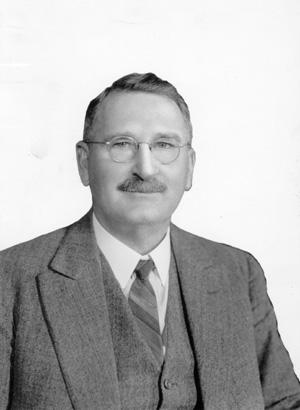John Willcock facts for kids
Quick facts for kids
John Willcock
|
|
|---|---|
 |
|
| 15th Premier of Western Australia | |
| In office 20 August 1936 – 31 July 1945 |
|
| Monarch | Edward VIII George VI |
| Governor | None |
| Preceded by | Philip Collier |
| Succeeded by | Frank Wise |
| Constituency | Geraldton |
| Personal details | |
| Born | 9 August 1879 Frogmore, New South Wales |
| Died | 7 July 1956 (aged 76) Subiaco, Western Australia |
| Nationality | British subject and Australian |
| Political party | Labor Party |
| Spouse | Sicily Ann Willcock (née Stone) |
John Collings Willcock (born August 9, 1879 – died June 7, 1956) was an important leader in Western Australia. He was the 15th Premier of Western Australia, which is like being the head of the state government. He served in this big role from 1936 to 1945. John Willcock was a member of the Australian Labor Party.
Contents
John Willcock's Early Life and Work
John Willcock was born in a place called Frogmoor (now Frogmore) in New South Wales. This was on August 9, 1879. His father, Joseph Willcock, was a miner.
John went to school at Sydney Boys High School. In 1897, he moved to Western Australia. He worked at the Fremantle Harbour Works for two years. After that, he became an engine driver or cleaner for the Western Australian Government Railways.
In 1902, he moved to Geraldton. There, he worked as a railway fireman until 1912. In 1907, he married Sicily Ann Stone. They had three sons and three daughters together. From 1912 to 1917, he continued working as an engine driver.
John Willcock's Political Journey
John Willcock became a very active member of the Labor Party (ALP). He held many different jobs in the Geraldton branch of the Engine Drivers', Firemen's and Cleaners' Union. He also represented them at big meetings called Federal conferences.
From 1914 to 1917, he was the President of the Geraldton District Council of the ALP. He also became a Justice of the Peace in 1915. This meant he could help with legal matters.
On April 14, 1917, he tried to win a seat in the Western Australian Legislative Assembly. This was for the Geraldton area. He ran in a special election because the previous member, Edward Heitmann, had resigned. However, he lost to Samuel Elliott.
Just five months later, he tried again in the main election on September 29, 1917. This time, he won the Geraldton seat! Soon after, he joined the leadership team of the Australian Workers' Union. He also became the secretary for the Parliamentary Labor Party.
Becoming a Minister
On April 16, 1924, John Willcock was given important roles in the government. He became the Minister for Railways and Justice, and also the Minister for Police. These roles were part of the government led by Philip Collier.
He was the Police Minister until June 25, 1928. He held the Railways and Justice jobs until the Collier government was no longer in power on April 23, 1930. From 1927 to 1930, he was also the deputy leader of the Parliamentary Labor Party. This meant he was second in command.
Leading Western Australia
The Labor party returned to power on April 24, 1933, again led by Philip Collier. John Willcock became the Minister for Railways and Justice once more. He was also given the Education role.
He stopped being the Education Minister on March 26, 1935. At that time, he was reappointed as the deputy leader. On August 19, 1936, Philip Collier decided to step down as Premier. The very next day, John Willcock was chosen to take his place!
When he became Premier, he stopped being the Minister for Railways and Justice. Instead, he took on the roles of Premier, Treasurer (who manages the state's money), and Minister for Forests. He stopped being the Forests Minister on December 9, 1943.
John Willcock held the Premier and Treasurer roles for almost nine years. He resigned on July 31, 1945, because of his health. During his time as Premier, he represented Western Australia at the special event for the coronation of King George VI and Queen Elizabeth in May 1937. People knew him for his "disarming modesty," meaning he was humble and not boastful.
Later Years and Legacy
After stepping down as Premier, John Willcock remained a member of parliament. He retired from politics completely after the election on March 15, 1947. He passed away on June 7, 1956, at St John of God Hospital in Subiaco, Western Australia. He was buried in Karrakatta Cemetery.
A school in Geraldton, called John Willcock College, was named after him when it opened in 1975. It was originally called John Willcock Senior High School. Later, it was renamed Champion Bay Senior High School.

